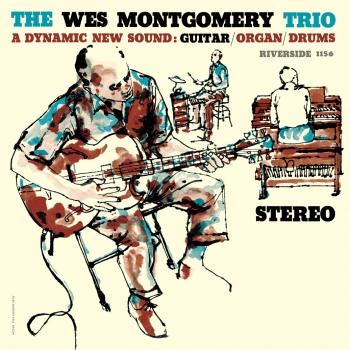Wes Montgomery Trio
Biographie Wes Montgomery Trio
Wes Montgomery
Universally acknowledged as one of the greatest guitarists in the history of jazz, Wes Montgomery virtually defined modern jazz guitar during the 1950s and ’60s. His unique idiomatic conception to the instrument and the power of his soloing influenced generations of players who followed him; guitar icons such as George Benson, Pat Martino, Larry Coryell, John Scofield, Pat Metheny, Lee Ritenour and Russell Malone.
Historically, Wes Montgomery’s relatively short career arose in the era after Charlie Christian and Django Reinhardt had established the prevailing standard for jazz guitar in the early and mid-twentieth century. Indeed, Wes was heavily influenced by Charlie Christian, in particular. But Wes changed the language of jazz guitar, harmonically, melodically and technically. The way he approached the harmonic structures of tunes, reharmonizing them by implication in the course of his improvisations set the standard for virtually every guitarist who followed him. Typically in his solos, he outlined chords melodically, but the chords he outlined were often different chords than the rhythm section was playing—a kind of subtle chord substitution—which, in effect, extended the overall harmony in an idiosyncratic way that was unique, distinctive and immediately identifiable. Wes’s compelling harmonic approach, his remarkably fluid single note facility along with his trademark octaves and use of sophisticated chord melodies influenced generations of players who followed in his wake.
Montgomery was self-taught. He devised unconventional techniques that involved, for example, striking the strings exclusively with his right thumb instead of a pick. This unorthodox fingers-on-strings approach allowed him to achieve a warm, round sound on the instrument that was instantly recognizable while his delivery was imbued with deep soul and an irrepressible swing feel that set him apart from most other players of his day.
While he emerged on the scene as a solo artist in the late 1950s as a highly regarded exponent of urgently swinging hard bop (later exemplified by such classic recordings as 1960’s The Incredible Jazz Guitar of Wes Montgomery, 1962’s Full House and 1965’s Smokin’ at the Half Note), Montgomery had success late in his career as a prominent crossover artist whose pleasingly melodic fare caught on with much larger audiences than has his pure jazz efforts. His later recordings like Bumpin’, California Dreaming, Goin’ Out of My Head and Road Song (all lush productions masterminded by Creed Taylor) served as a jumping-off point for the many pop-oriented jazz guitarists who followed him; guitarists such as Ronnie Jordan, Norman Brown, Peter White, Chieli Minucci and Chuck Loeb.
Born John Leslie Montgomery on March 6, 1925 in Indianapolis, Indiana, Montgomery picked up guitar at the relatively late age of 19 and began teaching himself how to play by imitating recordings of his idol, Charlie Christian (particularly his ground-breaking single note choruses on “Solo Flight” with the Benny Goodman Orchestra). He played locally at the Club 440 with his brothers Monk on bass and Buddy on piano before touring the Midwest and South with his own group. In 1948, he began a two-year stint with Lionel Hampton’s big band, a band that included Charles Mingus on bass. Returning to his hometown, for a time, Wes had to make music a secondary part of his life, succumbing to the pressures of supporting a large family, which grew to encompass his wife and seven children. While settling down to a grueling factory job by day, he continued playing guitar by night at the Missile Club and often after-hours sessions at local clubs and other venues.
In 1955, Wes and his brothers began playing regularly around Indianapolis with Sonny Johnson and Alonzo “Pookie” Johnson in the Montgomery-Johnson Quintet (documented on the 2015 Resonance Records release In the Beginning). At the end of 1957, the Montgomery brothers, along with a fledgling trumpeter from Indianapolis, Freddie Hubbard, recorded several tunes that were issued on the Pacific Jazz label. A few months later, Wes recorded in Los Angeles with his brothers’ new group, The Mastersounds, although the guitarist continued to be based in his hometown. In September of 1959, Montgomery was discovered by alto sax great and talent scout Cannonball Adderley, who caught the guitarist at the Missile Room and immediately brought word of the phenomenal new talent to Riverside producer Orrin Keepnews, who signed him to the label. Wes’s debut for Riverside, 1959’s A Dynamic New Sound, was an organ trio outing with fellow Indianapolis native Melvin Rhyne on Hammond B-3 and Paul Parker on drums. But it was 1960’s The Incredible Jazz Guitar of Wes Montgomery, featuring pianist Tommy Flanagan, bassist Percy Heath and drummer Albert “Tootie” Heath, that established Montgomery as the new six-string king and heir to Charlie Christian’s throne.
Between 1959 and 1963, Keepnews produced a dozen Riverside albums with Montgomery as leader and three others on which he participated as a sideman. Those four years represented Montgomery at his peak. His stints with Verve (1964-1966) and A&M (1967-1968) — both under the direction of producer Creed Taylor — were commercially successful (he won a Best Instrumental Jazz Performance Grammy in 1967 for Goin’ Out of My Head), although these efforts were less highly regarded by jazz critics and guitar aficionados than by the general public or by the popular music press.
The guitar great had just returned home from a national tour when he suddenly died of a heart attack on June 15, 1968 at age 43. Rare recordings of Montgomery’s early years in Indiana, posthumously released on Resonance Records (2012’s Echoes of Indiana Avenue, 2015’s In The Beginning), add significantly to Wes’s rich recorded legacy.











